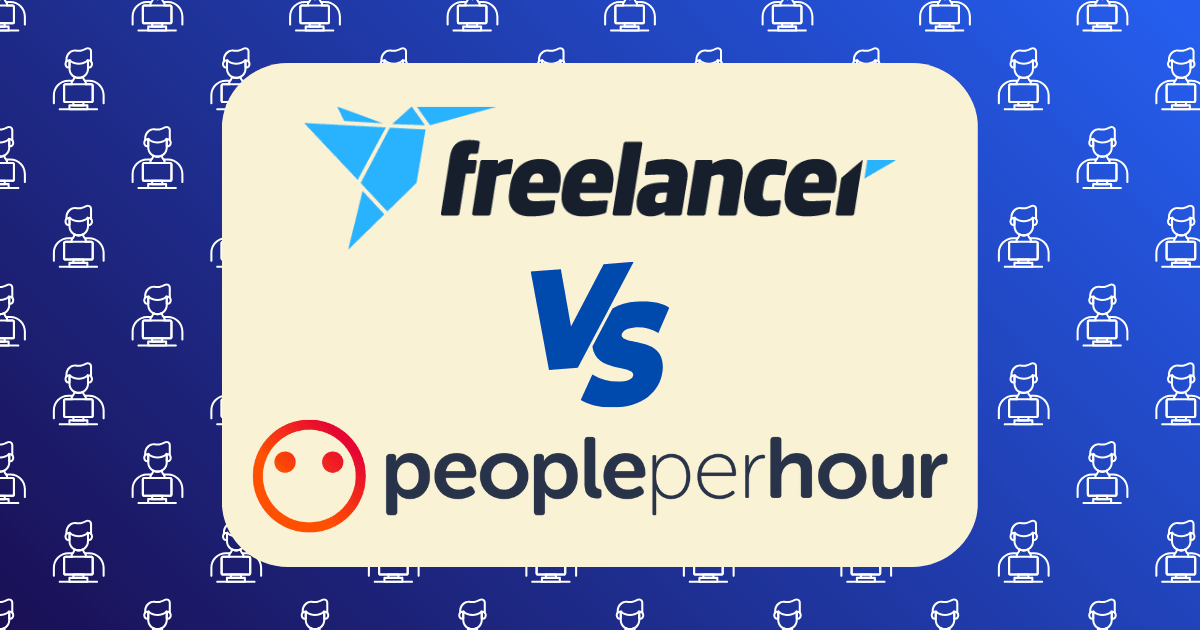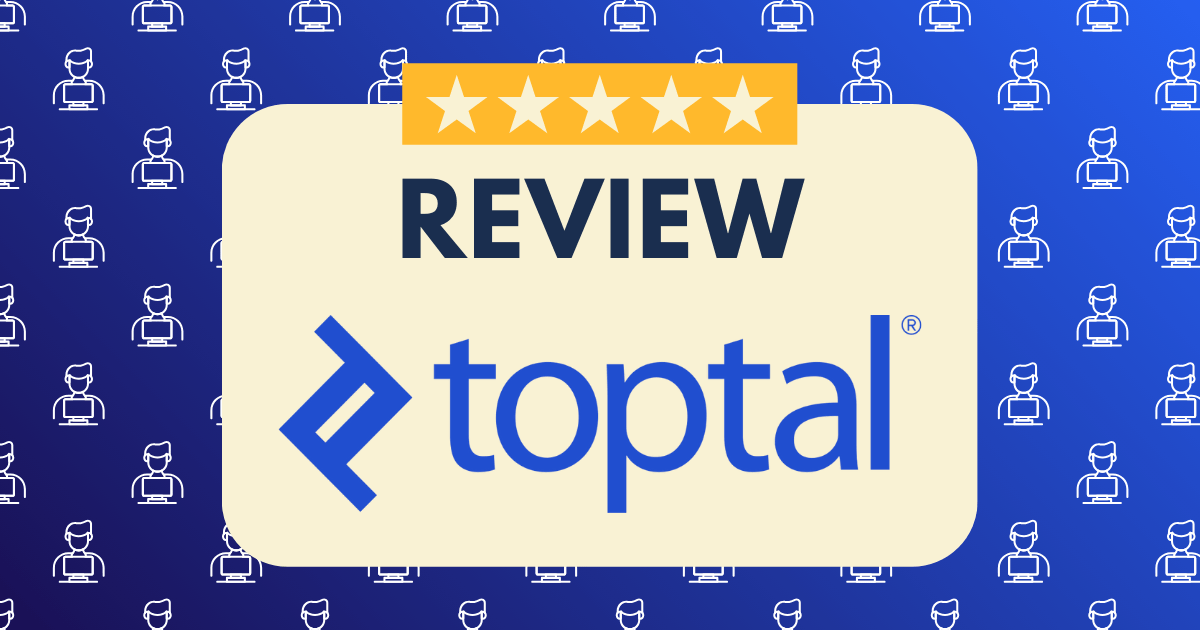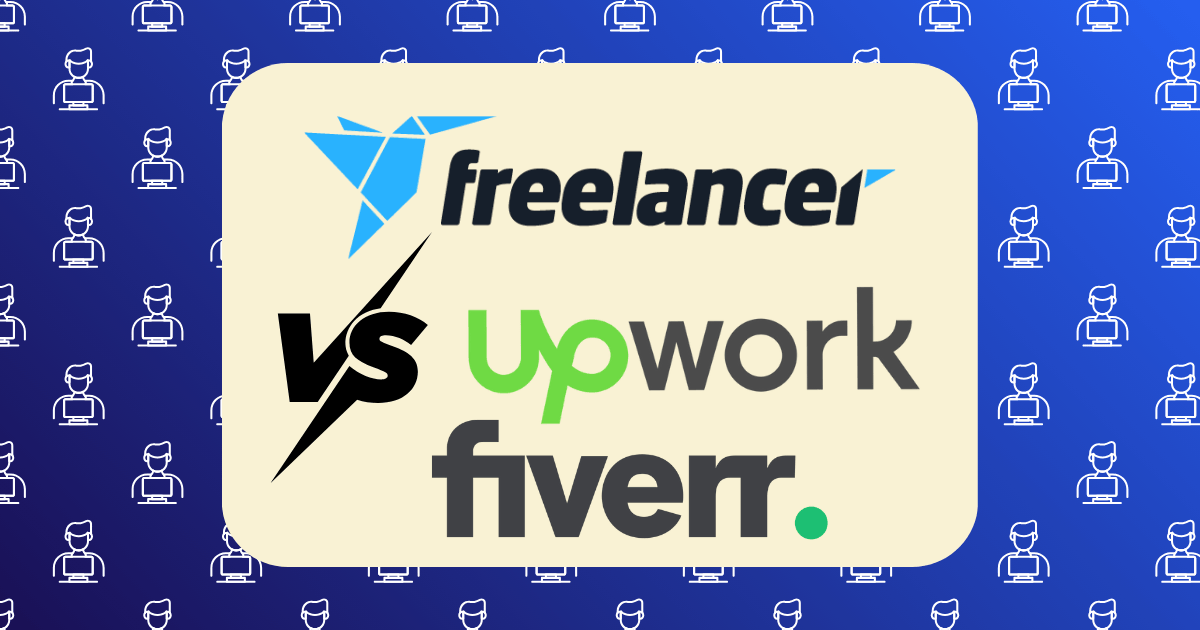Freelancer.com vs PeoplePerHour: Which Platform Got Me Higher-Paying Clients?

When I decided to transition from part-time to full-time freelancing last year, I knew platform selection would significantly impact my earning potential. Rather than spreading myself thin across multiple sites, I chose to conduct a focused experiment: I would invest equal time and effort into both Freelancer.com and PeoplePerHour (PPH) for six months, tracking every metric that mattered to determine which platform would better support my financial goals.
The results were illuminating—and in some cases, contradicted the conventional wisdom about these platforms. This data-driven comparison reveals which platform ultimately delivered higher-paying clients and better return on investment for my time.
The Experimental Design: Creating a Fair Comparison
To ensure meaningful results, I established clear parameters for my six-month test:
Profile Optimization
I created comparable profiles on both platforms:
- Identical portfolio samples
- Similar service descriptions
- Equivalent pricing structures
- Same response times (within 2 hours during business hours)
Time Investment
I allocated equal resources to both platforms:
- 10 hours weekly on each platform
- 15 proposals submitted weekly per platform
- Similar project selection criteria
- Identical proposal templates (customized for each submission)
Data Tracking
I meticulously documented:
- Proposal conversion rates
- Project values
- Hourly rates achieved
- Client communication patterns
- Time spent per project
- Long-term client retention
This structured approach allowed me to make direct comparisons between the platforms based on quantifiable metrics rather than subjective impressions.
Platform Overview: Key Differences
Before diving into the results, it’s worth understanding the fundamental differences between these platforms, as they significantly impact the freelancer experience.
Freelancer.com at a Glance
According to FullScope Tools, Freelancer.com is one of the largest platforms with over 60 million registered users across 247 countries. Key features include:
- Fee Structure: Flat 10% fee on all projects (or $5 minimum)
- Project Acquisition: Primarily bid-based with some contests
- Market Focus: Truly global with projects from diverse regions
- Project Types: Wide range from micro-tasks to enterprise projects
- Verification Process: Basic identity verification
PeoplePerHour at a Glance
In contrast, Vettted notes that PeoplePerHour has approximately 3 million freelancers with a stronger presence in the UK and Europe. Key features include:
- Fee Structure: Tiered commission (20% for first £250, 7.5% for £250-£5000, 3.5% above £5000 per client)
- Project Acquisition: Combination of bidding and “Hourlies” (pre-packaged services)
- Market Focus: Primarily UK and European clients
- Project Types: Emphasis on creative and professional services
- Verification Process: More rigorous vetting of freelancers
These structural differences create distinct ecosystems that attract different types of clients and projects.
The Results: By the Numbers
After six months of parallel effort on both platforms, here’s how the numbers broke down:
Proposal Success Rates
- Freelancer.com: 8.2% (18 projects from 220 proposals)
- PeoplePerHour: 15.6% (34 projects from 218 proposals)
PPH demonstrated a significantly higher conversion rate, nearly doubling Freelancer.com’s performance. This efficiency difference substantially impacted the return on time invested in proposal writing.
Project Value Distribution
- Freelancer.com:
- Average project value: $187
- Median project value: $120
- Range: $35 – $780
- PeoplePerHour:
- Average project value: $312
- Median project value: $225
- Range: $75 – $1,450
PPH not only delivered more projects but also higher-value ones, with the average project worth 66.8% more than on Freelancer.com.
Hourly Rate Analysis
Perhaps the most telling metric for freelancers is the effective hourly rate:
- Freelancer.com:
- Average quoted hourly rate: $45
- Effective hourly rate (including unpaid time): $28.50
- PeoplePerHour:
- Average quoted hourly rate: $65
- Effective hourly rate (including unpaid time): $52.75
The effective hourly rate on PPH was 85% higher than on Freelancer.com when accounting for all time invested, including proposal writing, client communication, and project execution.
Client Retention Metrics
Long-term client relationships often determine sustainable freelance success:
- Freelancer.com:
- One-time clients: 72%
- Repeat clients (2-3 projects): 22%
- Long-term clients (4+ projects): 6%
- PeoplePerHour:
- One-time clients: 53%
- Repeat clients (2-3 projects): 32%
- Long-term clients (4+ projects): 15%
PPH demonstrated significantly better client retention rates, with nearly half of clients returning for additional projects compared to less than a third on Freelancer.com.
Client Quality Analysis: Beyond the Numbers
Raw earnings data tells only part of the story. The quality of client interactions significantly impacts both job satisfaction and long-term earning potential.
Client Communication Patterns
I tracked several aspects of client communication to assess quality:
- Average Messages Per Project:
- Freelancer.com: 27
- PeoplePerHour: 18
- Clarity of Project Requirements (1-5 scale):
- Freelancer.com: 2.8
- PeoplePerHour: 3.9
- Scope Creep Incidents:
- Freelancer.com: 44% of projects
- PeoplePerHour: 21% of projects
PPH clients generally provided clearer requirements, required less back-and-forth communication, and were less likely to request work beyond the agreed scope without additional compensation.
Client Sophistication Assessment
I also evaluated clients based on their apparent understanding of the freelance relationship:
- Professional Communication Style:
- Freelancer.com: 65% of clients
- PeoplePerHour: 88% of clients
- Realistic Expectations:
- Freelancer.com: 58% of clients
- PeoplePerHour: 82% of clients
- Respect for Expertise:
- Freelancer.com: 61% of clients
- PeoplePerHour: 79% of clients
PPH clients consistently demonstrated greater professionalism and understanding of the value exchange in the freelance relationship.
Fee Impact Analysis: The True Take-Home Pay
Platform fees significantly impact actual earnings. Here’s how the different fee structures affected my take-home pay:
Freelancer.com Fee Impact
With a flat 10% fee on all earnings:
- Gross earnings: $3,366
- Fees paid: $336.60
- Net earnings: $3,029.40
PeoplePerHour Fee Impact
With their tiered fee structure:
- Gross earnings: $10,608
- Fees paid: $1,327.65 (varying percentages based on client earnings)
- Net earnings: $9,280.35
While PPH’s fees were higher in absolute terms due to greater earnings, their declining percentage structure rewarded client relationship development. For my highest-value client, the effective fee rate dropped to just 7.8% after multiple projects.
The Psychological Factor: Platform Experience
Beyond quantitative metrics, the qualitative experience of using each platform impacted my productivity and satisfaction:
User Interface and Experience
- Freelancer.com: The interface felt cluttered and dated, with frequent notifications and upsell attempts creating distractions.
- PeoplePerHour: The cleaner interface and more intuitive workflow reduced cognitive load and allowed greater focus on client work.
Community and Support
- Freelancer.com: Support responses averaged 28 hours, and the community forums felt dominated by complaints.
- PeoplePerHour: Support responses averaged 12 hours, and the community had more constructive discussion and knowledge sharing.
These experiential factors indirectly impacted earnings by affecting productivity and platform engagement.
Strategic Advantages: Platform-Specific Opportunities
Each platform offered unique strategic advantages that could be leveraged for increased earnings:
Freelancer.com Advantages
- Contest Opportunities: Freelancer.com’s contest feature provided an alternative revenue stream, though with mixed results (I won 2 out of 11 contests entered).
- Global Reach: The platform’s broader geographic presence provided access to clients from emerging markets that weren’t present on PPH.
- Volume Potential: The sheer number of projects posted daily created opportunities for quick turnaround, lower-value work to fill schedule gaps.
PeoplePerHour Advantages
- Hourlies Feature: The ability to create pre-packaged service offerings generated passive inquiries, with 38% of my projects coming from clients who found my Hourlies rather than from my proposals.
- Certification System: PPH’s skills certification system provided credibility that translated to higher conversion rates for premium-priced services.
- Featured Freelancer Program: After three months, I qualified for featured status in my category, significantly boosting visibility and inbound inquiries.
Client Demographics: Who Pays More and Why
Analyzing client profiles revealed interesting patterns that explained some of the earnings disparities:
Client Business Size
- Freelancer.com:
- Individuals/Solopreneurs: 58%
- Small Businesses (2-10 employees): 32%
- Medium Businesses (11-50 employees): 10%
- Large Businesses (51+ employees): 0%
- PeoplePerHour:
- Individuals/Solopreneurs: 29%
- Small Businesses (2-10 employees): 41%
- Medium Businesses (11-50 employees): 24%
- Large Businesses (51+ employees): 6%
PPH attracted a higher percentage of established businesses with larger budgets and more professional procurement processes.
Client Geographic Distribution
- Freelancer.com:
- North America: 32%
- Europe: 28%
- Asia: 25%
- Australia/NZ: 10%
- Other: 5%
- PeoplePerHour:
- North America: 27%
- Europe: 61%
- Asia: 8%
- Australia/NZ: 4%
- Other: 0%
PPH’s European focus was evident, with UK clients alone representing 42% of my projects. These clients typically had higher budgets and more clearly defined projects.
Platform-Specific Strategies That Worked
Through experimentation, I identified several platform-specific strategies that significantly improved results:
Effective Freelancer.com Strategies
- Rapid Response Advantage: Being among the first 5 bidders increased my conversion rate by 3.5x. I set up alerts for new projects in my categories to enable quick responses.
- Milestone Structuring: Breaking larger projects into multiple milestones improved client comfort with higher total project values, increasing my average project size by 40%.
- Strategic Underbidding: For high-visibility projects with long-term potential, strategically bidding 10-15% below my standard rate to win the initial project often led to higher-value follow-up work.
Effective PeoplePerHour Strategies
- Hourly Optimization: Creating a strategic ladder of Hourlies at different price points (£75, £150, £300) created natural upsell opportunities.
- Testimonial Leverage: Actively requesting detailed testimonials after successful projects significantly improved conversion rates on subsequent proposals.
- Local Market Positioning: Emphasizing UK-specific knowledge and experience in my profile and proposals increased my appeal to the platform’s core client base.
The Six-Month Financial Comparison
When all metrics are considered, the financial comparison between the platforms was stark:
- Freelancer.com Total Net Earnings: $3,029.40
- PeoplePerHour Total Net Earnings: $9,280.35
PPH generated 206% more net income than Freelancer.com over the six-month period with an equivalent time investment.
Why the Dramatic Difference?
Analyzing the data revealed several key factors behind PPH’s superior performance:
1. Client Quality Snowball Effect
PPH’s more rigorous vetting process created a higher baseline of client quality, which led to:
- Better reviews
- Higher-quality portfolio examples
- More professional references
- Increased algorithm visibility
This created a positive feedback loop that continuously improved my platform standing and client quality.
2. Fee Structure Incentives
PPH’s declining fee structure incentivized relationship building with clients. By focusing on converting one-time clients into repeat customers, I was able to significantly reduce the effective commission rate over time.
3. Market-Platform Alignment
My services (content strategy and copywriting) aligned better with PPH’s client base of European small and medium businesses with established marketing budgets. On Freelancer.com, these services were often viewed as luxury add-ons rather than essential investments.
4. Visibility Mechanics
PPH’s algorithm appeared to weight quality metrics (completion rate, client satisfaction, response time) more heavily than bid price, allowing for premium positioning without sacrificing visibility. Freelancer.com’s system seemed more price-sensitive, creating downward pressure on rates.
Strategic Recommendations Based on Freelancer Type
Based on this experiment, here are my recommendations for different types of freelancers:
For Beginners with Limited Portfolio
- Start with: Freelancer.com
- Reasoning: Lower barrier to entry, higher volume of smaller projects to build experience
- Transition plan: Move to PPH after securing 5-10 solid portfolio pieces and positive reviews
For Established Freelancers with Solid Portfolio
- Focus on: PeoplePerHour
- Reasoning: Higher-quality clients, better rates, more professional relationships
- Supplementary platform: Freelancer.com for specific niches or geographic targets not well-represented on PPH
For Technical/Development Freelancers
- Consider: Balanced approach between platforms
- Reasoning: Freelancer.com has stronger representation in technical categories
- Strategy: Use PPH for European/UK clients and Freelancer.com for global reach
For Creative Professionals
- Primary platform: PeoplePerHour
- Reasoning: Stronger appreciation for creative services, better understanding of appropriate rates
- Differentiation strategy: Use Hourlies to create clear service tiers and packaging
My Current Platform Strategy
Based on the results of this experiment, I’ve adjusted my platform strategy:
- Primary platform: PeoplePerHour (80% of platform time)
- Secondary platform: Freelancer.com (20% of platform time, focused on specific niches)
- Long-term goal: Transitioning top clients from both platforms to direct relationships
This balanced approach maximizes earnings while maintaining diverse client sources for stability.
Conclusion: The Clear Winner for Higher-Paying Clients
After six months of systematic comparison, PeoplePerHour emerged as the decisive winner for attracting higher-paying clients in my field. The platform delivered:
- 66.8% higher average project values
- 85% higher effective hourly rates
- 206% greater total earnings
- Significantly better client quality and retention
While individual results will vary based on services offered, geographic focus, and experience level, the data strongly suggests that PPH’s more curated approach creates a marketplace where professional freelancers can command rates that better reflect their value.
That said, Freelancer.com remains a valuable platform for specific purposes—particularly for beginners building experience, freelancers in technical fields, and those seeking global client reach beyond Europe and North America.
The most effective approach for maximizing freelance income isn’t choosing one platform exclusively, but strategically leveraging each platform’s strengths while continuously working to move your best clients toward direct, platform-independent relationships.







